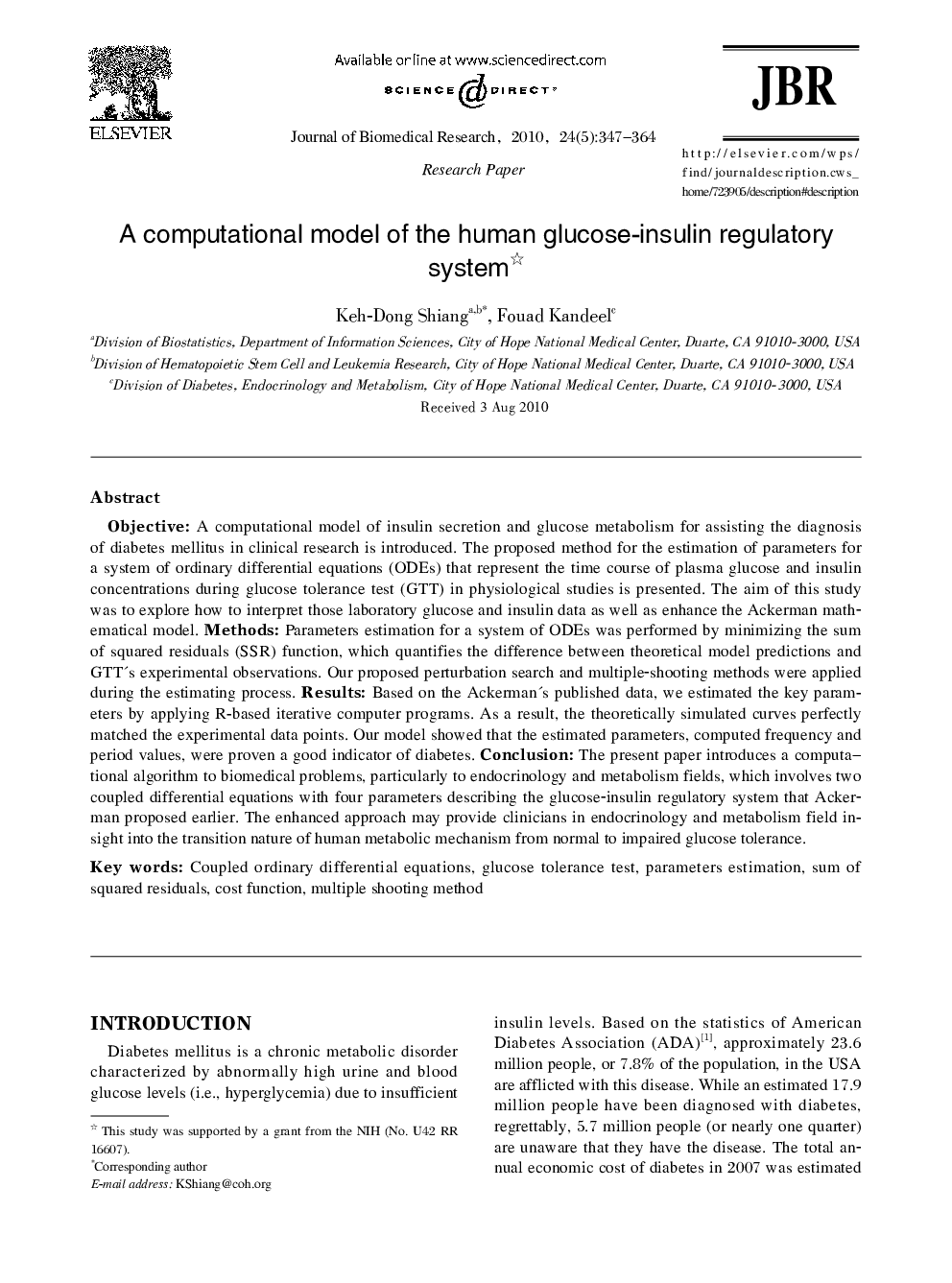| Article ID | Journal | Published Year | Pages | File Type |
|---|---|---|---|---|
| 3475627 | Journal of Biomedical Research | 2010 | 18 Pages |
ObjectiveA computational model of insulin secretion and glucose metabolism for assisting the diagnosis of diabetes mellitus in clinical research is introduced. The proposed method for the estimation of parameters for a system of ordinary differential equations (ODEs) that represent the time course of plasma glucose and insulin concentrations during glucose tolerance test (GTT) in physiological studies is presented. The aim of this study was to explore how to interpret those laboratory glucose and insulin data as well as enhance the Ackerman math-ematical model.MethodsParameters estimation for a system of ODEs was performed by minimizing the sum of squared residuals (SSR) function, which quantifies the difference between theoretical model predictions and GTT's experimental observations. Our proposed perturbation search and multiple-shooting methods were applied during the estimating process.ResultsBased on the Ackerman's published data, we estimated the key parameters by applying R-based iterative computer programs. As a result, the theoretically simulated curves perfectly matched the experimental data points. Our model showed that the estimated parameters, computed frequency and period values, were proven a good indicator of diabetes.ConclusionThe present paper introduces a computational algorithm to biomedical problems, particularly to endocrinology and metabolism fields, which involves two coupled differential equations with four parameters describing the glucose-insulin regulatory system that Ackerman proposed earlier. The enhanced approach may provide clinicians in endocrinology and metabolism field in-sight into the transition nature of human metabolic mechanism from normal to impaired glucose tolerance.
